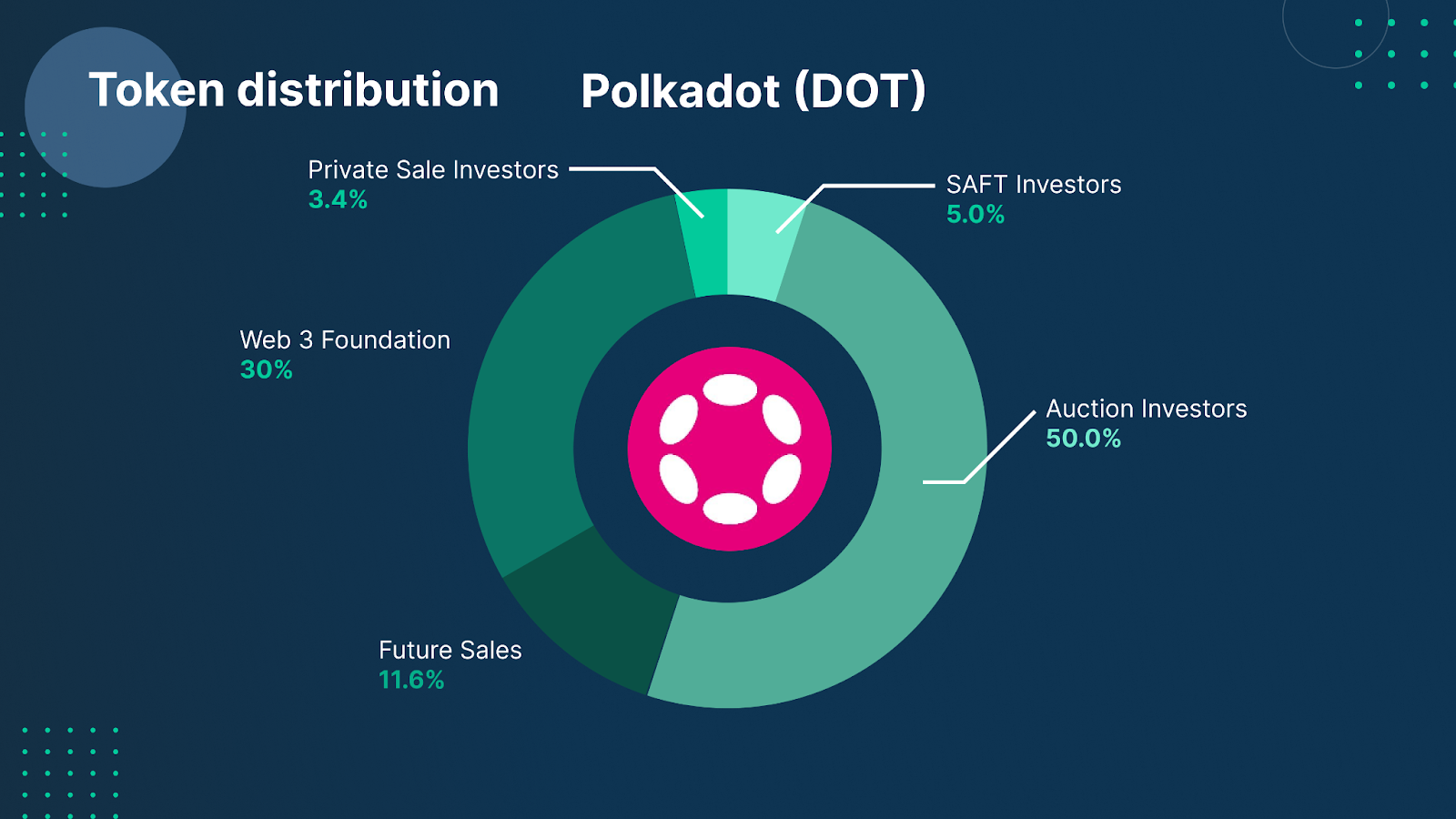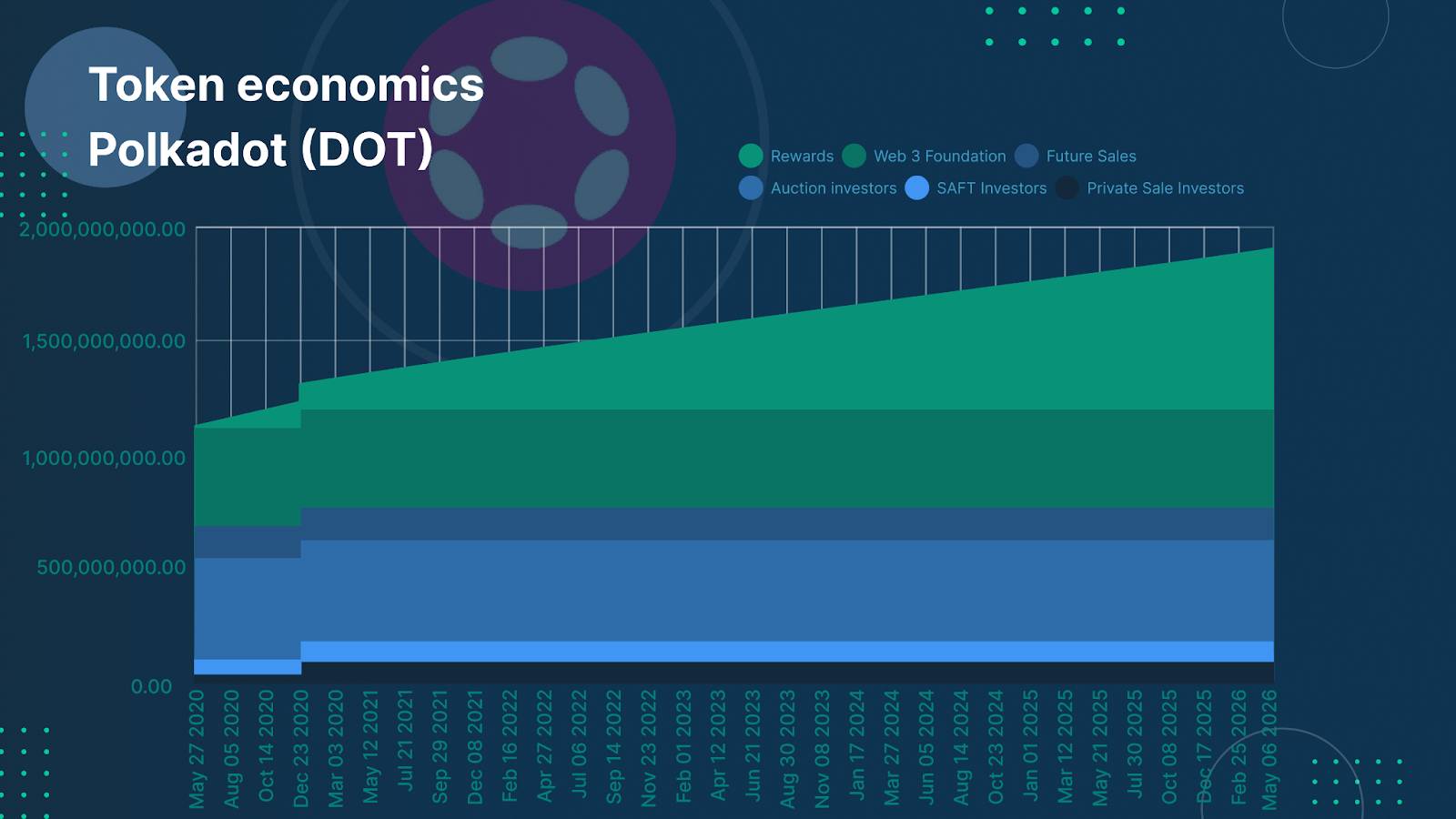Developed as a multi-chain framework, Polkadot stands out for its ability to connect various blockchains into a unified network, enabling them to operate seamlessly together. This capability not only solves the long-standing issue of blockchain isolation, and data silos, but also paves the way for a more integrated and efficient digital future. As we unravel the layers of Polkadot, we’ll understand how it’s redefining the blockchain landscape and why it’s quickly becoming a cornerstone technology in the world of decentralised applications.
Polkadot
Polkadot, conceptualised by Dr. Gavin Wood, a co-founder of Ethereum, came to life as an answer to the pressing challenges of scalability and interoperability in the blockchain ecosystem. Launched in 2020, it was designed to enable different blockchains to communicate and share information in a secure, trust-free environment. This revolutionary multi-chain framework connects various ‘parachains,’ or parallel blockchains, each optimised for specific use cases or functionalities, to a central Relay Chain.
The Relay Chain, Polkadot’s heart, is responsible for the network’s shared security, consensus, and cross-chain interoperability. It allows transactions to be spread across multiple chains, reducing the burden on any single chain and thus enhancing scalability and efficiency. Parachains are distinct in their ability to tailor their features to specific needs while benefiting from the security and interoperability provided by the Relay Chain.
Polkadot also employs an innovative governance model where all token holders have a say in the network’s future. This includes voting on proposed upgrades and changes, which can be implemented without forking the network, ensuring a dynamic and evolving ecosystem.
Furthermore, the network uses a nominated proof-of-stake (NPoS) consensus mechanism, which is more energy-efficient than proof-of-work systems and allows for higher scalability. In this system, token holders can stake their DOT (Polkadot’s native token) to secure the network, participate in governance, and earn rewards.
How Polkadot Works
Polkadot is designed to address some of the most pressing challenges facing the Web3 chains, namely, interoperability, scalability, and upgradability. Its unique architecture and design principles set it apart in the Web3 landscape.
At the core of Polkadot’s architecture is the Relay Chain, which is responsible for the network’s security, consensus, and cross-chain interoperability. It doesn’t process ordinary transactions but rather coordinates the system as a whole, including the various parachains.
Parachains in Polkadot are independent blockchains that run in parallel within the Polkadot network. Each parachain can have its own tokens, governance rules, and be tailored for specific use cases (like smart contracts, file storage, identity management, etc.). They leverage the Relay Chain’s computing resources to confirm the accuracy of the transactions they process.
Polkadot also leverages parathreads, which are functionally similar to parachains but with a more flexible connectivity model. Parathreads are ideal for blockchains that don’t require continuous connectivity to the network.
Polkadot also employs cross-chain bridges. These are special types of parachains or parathreads that connect Polkadot to external networks like Ethereum and Bitcoin, enabling interoperability between Polkadot and other blockchains.
Polkadot uses a variant of Proof of Stake called Nominated Proof of Stake (NPoS). In this system, validators secure the network by staking DOT, Polkadot’s native token, while nominators back validators with their own DOT stakes. This system is designed to be more energy-efficient and secure.
Polkadot also features an on-chain governance system where all stakeholders have a voice. Changes to the network are proposed and voted on by DOT holders, allowing Polkadot to adapt and upgrade without hard forks.
Why is Polkadot Unique
Polkadot is more than just a traditional Web3 chain, it’s a blockchain of blockchains (often called a multichain network). It aims to create a fully interoperable and scalable web of blockchains, enabling diverse applications to communicate and operate together efficiently. This vision, if fully realised, could significantly expand the capabilities and reach of Web3.
Polkadot is designed to enable different blockchains to transfer messages and value in a trust-free fashion, bridging a variety of networks. This level of interoperability goes beyond just token transfers, allowing for a wide range of data and asset types to be shared across private, public, permissionless, and permissioned blockchains.
Polkadot’s novel shared security model (also known as pooled security) allows multiple chains (parachains) to leverage the collective security of the Polkadot network. This means even smaller blockchains can benefit from strong security without the need to establish their own network of miners or validators.
The network’s ability to process multiple transactions on different parachains simultaneously allows for higher scalability. This parallel processing capability is a significant step towards solving the scalability issues faced by older blockchains like Bitcoin and Ethereum.
What is the Polkadot Ecosystem
Polkadot Relay Chain: The core of the Polkadot network, the Relay Chain, is responsible for the network’s security, consensus, and cross-chain interoperability. It connects various parachains and facilitates communication between them.
Parachains: These are independent blockchains that connect to the Relay Chain. Each parachain can be customised for specific use cases, such as decentralised finance (DeFi), gaming, identity management, or data storage. They benefit from the shared security and interoperability provided by the Relay Chain.
Parathreads: Similar to parachains but with a pay-as-you-go model, parathreads are more cost-effective for blockchains that don’t need continuous connectivity to the Polkadot network.
Bridges: These special parachains or parathreads enable Polkadot to connect and communicate with external blockchains like Ethereum and Bitcoin, allowing for interoperability and transfer of data and value across different blockchain networks.
Substrate Framework: Developed by Parity Technologies, Substrate is a blockchain-building framework used to create custom parachains and parathreads. It offers flexibility and ease of development, significantly lowering the barrier to creating a blockchain.
What is the DOT Token
The DOT token is the native cryptocurrency of the Polkadot network, playing a central role in the functioning and governance of the Polkadot ecosystem. As a multifaceted digital asset, DOT serves several key purposes within the Polkadot ecosystem.
Governance: DOT holders have governance rights, which means they can participate in decision-making processes for the Polkadot network. This includes voting on proposed changes to the protocol, such as upgrades and network parameters. This governance model is a fundamental aspect of Polkadot’s community-driven approach, ensuring that the network evolves in line with the interests and needs of its users.
Staking: Polkadot operates on a Nominated Proof of Stake (NPoS) consensus mechanism. DOT holders can stake their tokens to support the network’s security and operations. By staking DOT, holders can become validators or nominators (supporting validators) in the network. This process is crucial for securing the Relay Chain, validating transactions, and creating new blocks. Stakers are incentivized for their participation with staking rewards.
Bonding: DOT tokens are used for “bonding” to connect parachains to the Polkadot Relay Chain. Projects that wish to launch their parachain must lock up a certain amount of DOT for as long as they want to remain connected to the network. This bonding ensures that parachains have a vested interest in the network’s health and security.
Facilitating Interoperability: As the main currency of the Polkadot network, DOT is used in transactions and interoperability functions. It helps facilitate various operations across Polkadot’s interconnected blockchain ecosystem.
Network Fees: DOT is used to pay for transaction fees on the network, which helps prevent spam transactions and contributes to the overall stability and efficiency of the Polkadot system.
Polkadot Tokenomics


Polkadot Roadmap
Ongoing Developments: Enhancements After Launch
Polkadot has been undergoing various enhancements following its launch. These include the introduction of XCM, which is Polkadot’s standard for cross-consensus messaging, improvements to the cross-chain message passing protocol ( XCMP), advancements in governance systems, and the initiation of parathreads.
All these updates, along with any future modifications, can be implemented by the on-chain governance community of Polkadot. This will occur after the completion of a comprehensive process that includes development, testing, performance benchmarking, and thorough auditing.
How to buy DOT on Bitfinex
How to buy DOT with crypto
1. Log in to your Bitfinex account or sign up to create one.
2. Go to the Deposit page.
3. In the Cryptocurrencies section, choose the crypto you plan to buy DOT with and generate a deposit address on the Exchange wallet.
4. Send the crypto to the generated deposit address.
5. Once the funds arrive in your wallet, you can trade them for DOT. Learn how to trade on Bitfinex here.
How to buy DOT with fiat
1. Log in to your Bitfinex account or sign up to create one.
2. You need to get full verification to be able to deposit fiat to your Bitfinex account. Learn about different verification levels here.
3. On the Deposit page, under the Bank Wire menu, choose the fiat currency of your deposit. There’s a minimum amount for fiat deposits on Bitfinex; learn more here.
4. Check your Bitfinex registered email for the wire details.
5. Send the funds.
6. Once the funds arrive in your wallet, you can use them to buy DOT.
Also, we have Bitfinex on mobile, so you can easily buy DOT currency while on-the-go.
[ AppStore] [ Google Play]
DOT Community Channels
Website | Twitter | Discord | Reddit | Github | Element | Youtube
The post appeared first on Bitfinex blog.

